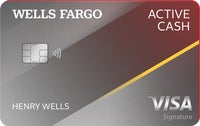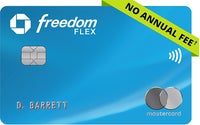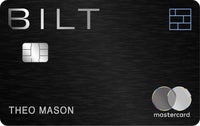Best credit cards for moving

The Bankrate promise
At Bankrate we strive to help you make smarter financial decisions. While we adhere to strict , this post may contain references to products from our partners. Here's an explanation for . The content on this page is accurate as of the posting date; however, some of the offers mentioned may have expired. Terms apply to the offers listed on this page. Any opinions, analyses, reviews or recommendations expressed in this article are those of the author’s alone, and have not been reviewed, approved or otherwise endorsed by any card issuer.
Our writers and editors used an in-house natural language generation platform to assist with portions of this article, allowing them to focus on adding information that is uniquely helpful. The article was reviewed, fact-checked and edited by our editorial staff prior to publication.
The right credit card for moving can help you foot the bill and earn a fair amount of rewards at the same time. But if rewards aren’t a priority, you can still make the most of a credit card during your move by leaning on convenient features and benefits.
If you’re hoping to make the most of a credit card for your move, you’ll want to look for cards with welcome offers, rewards on common moving expenses, introductory APRs on purchases (or even balance transfers) and other benefits. To help you make the right choice, here are our top credit card picks for anyone planning a move.
Comparing the best credit cards for moving
| Card | Best for | Annual fee | Bankrate score |
|---|---|---|---|
| Chase Sapphire Preferred® Card | Generous sign-up bonus | $95 | 4.8 |
| Citi® Diamond Preferred® Card | Balance transfers | $0 | 4.1 |
| Wells Fargo Active Cash® Card | Flat-rate cash rewards | $0 | 4.3 |
| Chase Freedom Flex® | Fueling up | $0 | 4.8 |
| Bilt Mastercard® | Rent payments | None | 4.0 |
Top credit cards for moving

Chase Sapphire Preferred® Card

Citi® Diamond Preferred® Card

Wells Fargo Active Cash® Card

Chase Freedom Flex®

Bilt Mastercard®
How to choose a credit card for moving
When choosing the best credit card for moving, you’ll want the best features that work for your move — whether it’s earning rewards from your moving expenses or being able to finance your moving costs over time with intro offers. Here’s what you should pay close attention to when choosing:
- Welcome bonus: Of course, getting the highest welcome bonus possible is ideal, but make sure that you can time your expenses to ensure you’ll meet the spending requirements within the given timeframe for the bonus.
- Intro APR offers: If you prefer to finance your moving expenses, a lengthy intro APR offer on new purchases could be beneficial.
- Rewards rate: Look for categories that match your moving expenses. The more you can earn back on your moving costs, the better.
- Travel redemptions: Some of the best travel credit cards offer boosted redemptions for travel accommodations and a long list of transfer partners, which can help you maximize the rewards you’ll earn on your moving expenses.
- Benefits: Perks and features like ongoing rewards, annual credits, cellphone insurance, travel protections and extended purchase warranties can provide value even when your move is over.
Frequently asked questions
-
Having a good credit score, a FICO score between 670 and 850, can help lower your moving costs by improving your chances of securing housing and getting lower interest rates on credit cards that can help you with moving expenses.
-
The Bilt World Elite Mastercard® Credit Card is optimal for rent payments because it rewards points without transaction fees and has no annual fee.
-
Applying for a new credit card before you move can help you maximize rewards and welcome offers. Aim for a two-month buffer before your move so you can make all of your purchases within the typical window for a welcome offer (about three months).
The bottom line
There are plenty of ways your moving budget can expand well beyond your initial projections. Having a credit card with the right features can provide some relief in the form of rewards, bonuses, perks and extra funding. For instance, cards like the Citi Diamond Preferred offer unique features like flex loans and entertainment access, while the Chase Freedom Flex earns valuable Chase Ultimate Rewards points.
If you’re ready to apply for a credit card that will help you move, find out which cards match your credit profile with Bankrate’s CardMatch tool. Once you’ve narrowed in on the right pick, start packing for the next exciting phase of your life. Hopefully, you’ll have everything you need to make your move smooth, successful and cost-effective.
Related Articles





